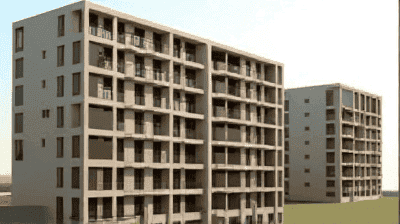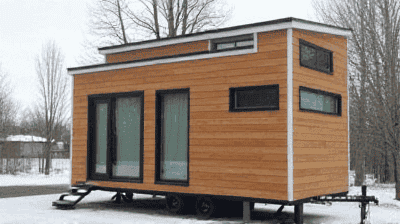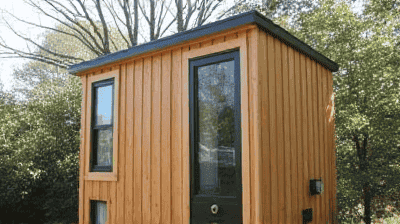
Urbanization is a defining characteristic of the modern world, with more than half of the global population now residing in cities. As urban centers continue to grow, they face a multitude of sustainability challenges, including housing shortages, environmental degradation, and rising energy consumption. One innovative approach to addressing these issues is the rise of tiny homes combined with micro apps designed to enhance urban living.
Tiny homes are residential structures that typically measure between 100 and 400 square feet. They offer a minimalist approach to living, promoting a lifestyle that prioritizes simplicity and sustainability. Tiny homes can be stationary or mobile and are often built using eco-friendly materials and design principles.
Space Efficiency: Every square foot is utilized effectively, often incorporating multifunctional furniture and innovative storage solutions.
Sustainable Materials: Many tiny homes are constructed using recycled or sustainably sourced materials, reducing their ecological footprint.
Lower Energy Consumption: Smaller spaces generally require less energy for heating, cooling, and lighting, making them more environmentally friendly.
Affordability: Tiny homes tend to be more affordable than traditional housing, making them an attractive option for individuals facing housing insecurity.
The tiny home movement gained traction in the early 2000s and has since evolved into a cultural phenomenon. Advocates promote tiny living as a means of simplifying life, reducing environmental impact, and addressing the high costs of urban housing.
Reduced Carbon Footprint: Living in a smaller space typically leads to lower energy consumption and a decreased carbon footprint.
Financial Mobility: Tiny homes offer a more affordable housing option, enabling individuals and families to invest their resources in experiences rather than material possessions.
Community and Connection: Many tiny home communities foster a sense of connection among residents, encouraging shared resources and collaboration.
Flexibility: Mobile tiny homes provide flexibility to relocate, allowing occupants to adapt to changing circumstances or take advantage of job opportunities.

Micro apps are lightweight applications designed to perform specific, focused tasks on mobile devices. They simplify the user experience by streamlining functionalities and minimizing complexity. In the context of urban living, micro apps can address various needs, from managing energy consumption to enhancing community interactions.
Personalization: Micro apps can be tailored to individual preferences, enabling users to customize their living environment for maximum comfort and efficiency.
Enhanced Connectivity: These applications facilitate communication and collaboration within communities, fostering social connections and resource-sharing.
Efficient Resource Management: Micro apps can help users monitor and manage their resource consumption, leading to more sustainable living practices.
User-Friendly Interface: Simplified designs make micro apps accessible to a wide range of users, promoting widespread adoption.
Micro apps can play a pivotal role in addressing urban sustainability challenges by providing users with tools to enhance their living environments. Some examples include:
Energy Monitoring Apps: These apps allow residents to track their energy consumption in real time, helping them make informed decisions about their usage and encouraging conservation.
Waste Management Apps: Micro apps can provide information about local recycling programs, composting options, and waste collection schedules, promoting responsible waste disposal.
Transportation Apps: By providing data on public transportation options, car-sharing services, and bike rentals, these apps encourage residents to use sustainable modes of transport.
Community Engagement Platforms: Social micro apps facilitate communication and collaboration among residents, allowing them to organize events, share resources, and build stronger community ties.
One of the most pressing challenges facing urban areas is the affordability of housing. As property values and rent prices continue to rise, many individuals and families find it increasingly difficult to secure adequate housing.
Lower Cost: Tiny homes provide a more affordable housing alternative, allowing individuals to own property without incurring significant debt.
Zoning Innovations: Many cities are beginning to adapt zoning laws to accommodate tiny homes, promoting diverse housing options and increasing access to homeownership.
Shared Resources: Micro apps can encourage resource-sharing initiatives within tiny home communities, reducing costs associated with communal tools and amenities.
Financial Management Tools: Applications that help users budget and manage expenses can empower residents to make financially sound decisions, enhancing their ability to afford housing.
Urban areas are significant contributors to carbon emissions and resource depletion. The construction and operation of buildings represent a substantial portion of global energy consumption.
Resource-Efficient Design: The smaller footprint of tiny homes allows for lower resource consumption, leading to reduced waste and environmental impact.
Sustainable Practices: Many tiny home occupants embrace sustainable living practices such as minimizing consumption and utilizing renewable energy sources.
Energy Efficiency Monitoring: Apps can help residents track energy usage, encouraging them to adopt energy-efficient practices and behaviors.
Environmental Education: Micro apps can disseminate information about sustainable living practices, enabling individuals to make informed choices.
Traffic congestion and pollution from transportation are significant urban sustainability challenges. Traditional urban development has often prioritized car-centric designs over public transport and walking infrastructure.
Location Choices: Tiny home developments are often situated in walkable neighborhoods with access to public transit, reducing the need for personal vehicles.
Flexible Living Arrangements: Mobile tiny homes can be positioned close to employment centers or transit hubs, promoting sustainable commuting solutions.
Public Transit Navigation: Apps that provide real-time updates on public transportation schedules and routes can encourage residents to opt for public transport over personal vehicles.
Carpooling and Ridesharing Apps: These applications can facilitate shared transportation options, reducing the number of cars on the road and associated emissions.
Cities struggle with waste management, and many urban areas experience high volumes of landfill waste and pollution.
Minimalist Lifestyles: Tiny home living encourages occupants to adopt minimalist lifestyles, leading to less consumption and waste generation.
Sustainable Materials: Often, tiny homes are built from eco-friendly materials, further reducing environmental impact.
Recycling and Composting Guides: Apps can educate users about local recycling practices, promoting responsible waste disposal and resource conservation.
Waste Reduction Tracking: By allowing users to track their waste output, these apps can foster accountability and encourage reduction efforts.

Various cities around the world have experienced the positive impact of tiny home communities. For example, in Los Angeles, organizations have developed tiny home villages for the homeless, providing safe, affordable, and supportive housing options.
Positive Outcomes: Residents report increased stability and improved well-being, demonstrating the effectiveness of tiny homes as a housing solution.
Community Support: Many tiny home villages include shared facilities and resources, fostering a sense of community and promoting social connections.
Innovations in micro apps have emerged in several urban areas, enhancing the sustainability of urban living. For instance, in Singapore, the City of Tomorrow initiative has introduced various micro apps focused on enhancing resource management.
Real-Time Data: The use of real-time data allows residents to make informed decisions about energy consumption, waste disposal, and transportation.
Community Engagement: Micro apps have built stronger connections among residents, encouraging collaboration and local resource-sharing.
While tiny homes and micro apps present promising solutions for urban sustainability, there are challenges to their widespread adoption:
Zoning Issues: Many cities have restrictive zoning laws that limit the construction of tiny homes and micro communities.
Building Codes: Existing building codes may not adequately accommodate tiny home designs, creating barriers to legality and safety.
Stigmatization: There can be stigma associated with tiny homes, as they are often incorrectly perceived as inferior or temporary housing.
Awareness and Education: A lack of understanding about the benefits of tiny homes and micro apps can hinder adoption.
Digital Divide: Not all urban residents have equal access to technology, which may limit the effectiveness of micro apps in promoting sustainability.
User Experience: Some micro apps may lack user-friendly designs, hindering widespread usage and engagement.

The combination of tiny homes and micro apps presents a compelling opportunity to address the pressing sustainability challenges faced by urban areas. By promoting compact living and innovative resource management solutions, cities can work towards more sustainable, resilient, and inclusive futures.
While challenges remain, the potential benefits of these approaches far outweigh the obstacles. Through thoughtful policy reform, community engagement, and technological advancements, tiny homes and micro apps can revolutionize urban living, foster stronger connections within communities, and contribute to a healthier planet. As we navigate an increasingly urbanized world, embracing these solutions will be essential for achieving sustainability goals and building vibrant, thriving cities for generations to come.